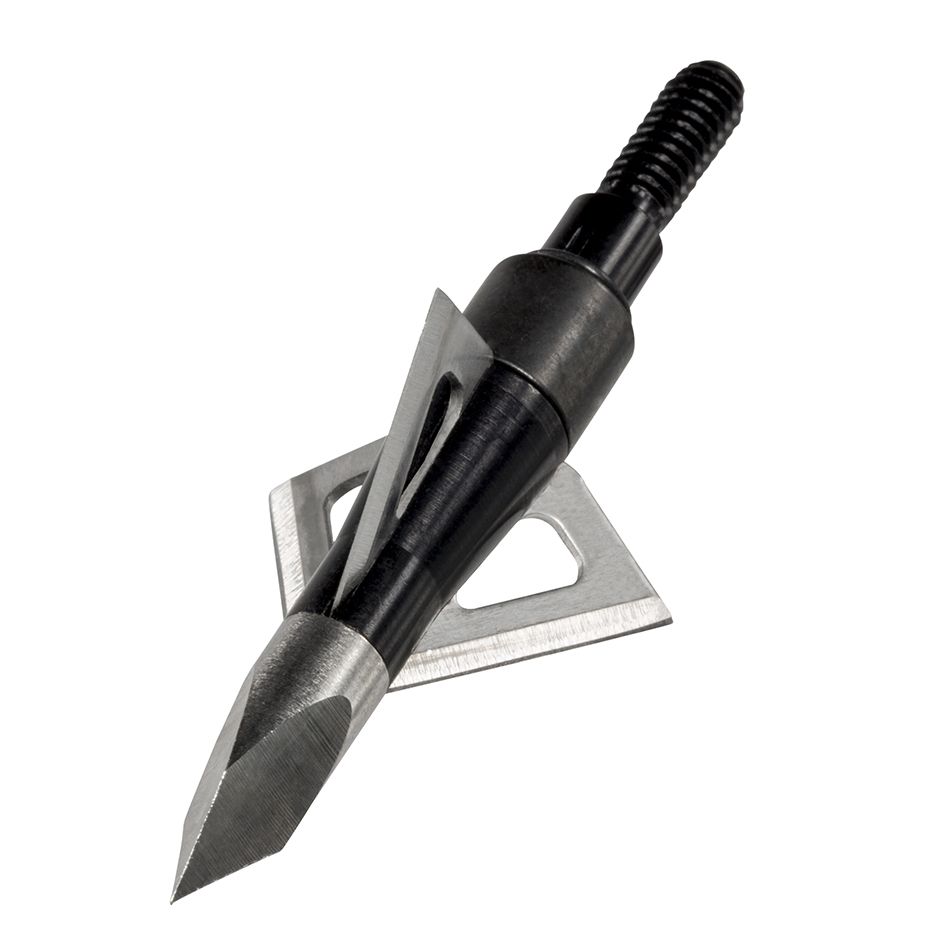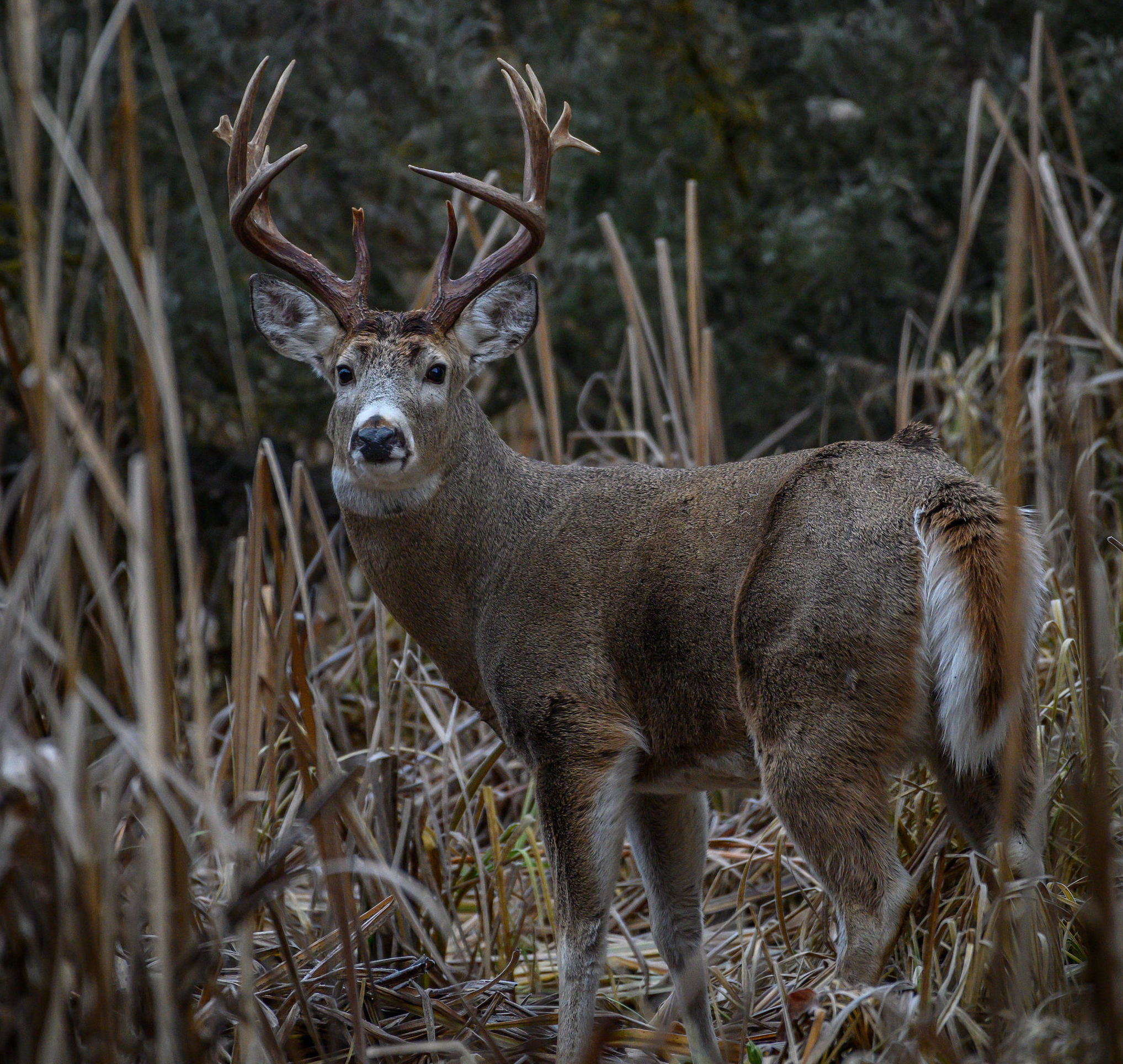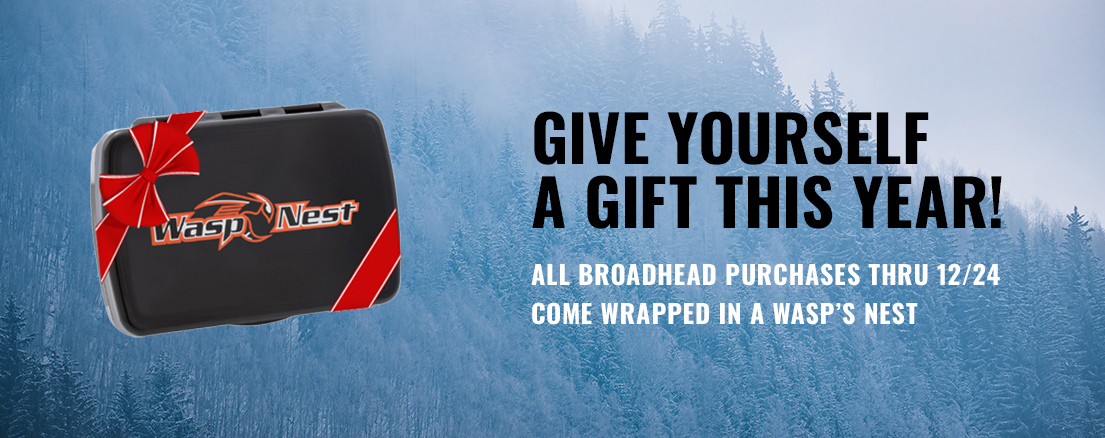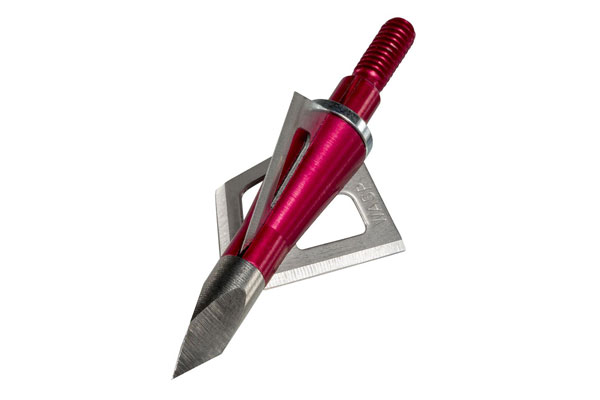Why Whitetail Bowhunters Should Aim Low
Steep angles and jumpy deer often make holding a bit low a good idea
It’s just before sunset on a crisp October evening, and you’re watching a freshly-cut corn field. A big doe is feeding her way right to your stand, and you’re ready. Your feet are planted perfectly, the release is clipped to your D-loop, and thoughts of breaded back strap in hot oil are in mind.
At 29 yards, the doe turns broadside and you draw your bow. But just as you hit your anchor point, she snaps to attention and stares right at you. The shot seems good—your 30-yard pin is on the vitals and you’re not rushed—but the arrow flits over the doe’s back and buries in the corn stubble behind her. She bounds 70 yards, stops, and snorts until the end of shooting light. Now, you’re wondering if there are any TV dinners left in the freezer. How did you miss such an easy opportunity?
STRING JUMPING
Most big-game animals have incredible reflexes, but whitetails are athletic champions. Whether it’s the sound of the bow string, the whistling of the arrow, or a little of both, an alert whitetail can duck the arrow from even a quick compound bow with surprising ease, especially at ranges of 30+ yards.
At closer ranges, a ducking deer may not dodge the arrow altogether, but it can squat enough to cause a high hit. This behavior is called “jumping the string” and the truth is, there’s not much a bowhunter can do about it except anticipate it and aim a little low. More on that in a bit.
ANGLED SHOTS
String jumping aside, there’s another reason why shots at whitetails from treestands frequently miss high. Shooting from sharp, downward angles is more challenging than shooting from flat ground. Those angles cut some of the distance from the target (though virtually all modern rangefinders compensate for this). Failing to compensate in your shooting form, like lowering your bow arm instead of bending at the waist, can also make you miss high.
DEER ANATOMY
The pure mechanics of sharp angles and ducking whitetails make holding a little low a good idea much of the time. That’s particularly true when shooting at deer that are the least bit alerted to your presence. That could be because they’ve caught your scent or seen you move, but it could also be because they’re responding to a grunt call or rattling antlers, and are already on edge.
But there’s another good reason to aim a little low, too: In the event of a less-than-perfect shot, low-hit deer are generally easier to recover than high-hit deer. A high arrow that zips through the meaty part of the upper shoulder or back straps might leave a bright-red blood trail for 50 yards, but it’ll dry up fast. Deer hit in that area are seldom recovered without a follow-up shot, and it’s a wound that they often survive. Deer hit low are another story.
A deer’s heart sits just a few inches above the bottom of the chest. Miss too low, and you’ll get a superficial brisket hit with some fur and fat on your arrow. But 3 inches above that, and you clip the heart and see the deer fall dead within sight. Hitting low and back is obviously not ideal, but it will nonetheless get the liver / stomach / intestinal area, which is 100% fatal. Low hits typically result in heavier blood trails, too, if only because gravity makes it easier for the blood to hit the ground.
All arrows are perfect in a perfect world, but angles, anatomy, and flighty deer behavior can cause post-shot problems that are out of your control. But you can anticipate some of those problems by aiming just a touch low. How much? As a rule, it’s rarely a bad call to hold as if the deer were 5 yards closer than your rangefinder says. Many veteran bowhunters aim for the very bottom of the chest—low heart—for virtually all broadside shots. Alert deer beyond 30 yards might require more compensation, but remember that your arrow’s trajectory falls rapidly beyond 30 yards. Those complications are another good reason why close, high-percentage shots are always best.
SIDEBAR
THE WASP BULLET

If you’re looking for maximum long-range accuracy from a fixed-blade broadhead, a low-profile 3-blade like the Wasp Bullet is a great option. The SST Tip, short ferrule, and 1-inch cutting diameter make for one of the most aerodynamic fixed-blades on the market, but the 0.27” stainless steel blades are sharp and rugged enough to break heavy bone and penetrate deep. The Wasp Bullet is available in 75- and 100-grain options, and is a particular favorite of many western bowhunters.
— Story by Wasp Archery staff; whitetail image by John Hafner
View All Posts

